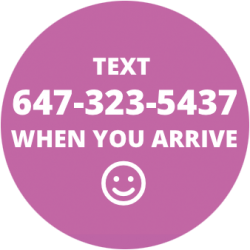
Baby teeth (primary teeth) are your child’s first set of teeth. There are twenty primary teeth in total. It is important that your child’s teeth are being properly cleaned with parental supervision, and that oral hygiene routines are established at an early age. A child‘s dental examination is recommended by the time the first tooth appears or by the child’s first birthday, whichever comes first. The paediatric dentist can offer valuable advice on many topics of children’s dentistry. We look forward to meeting you and your child. Please contact us to book an appointment that is convenient for you.
Primary Teeth
Primary teeth are the first set of teeth that will emerge in a child’s mouth. This first set of teeth will eventually get replaced by permanent (adult) teeth. Typically, a child will receive all twenty of their primary teeth by the age of two or three. If your child is teething and appears to be in pain, you can:
- rub the gums with a clean finger or cool cloth
- rub the gums with a safe teething toy
- speak to the paediatric dentist if you feel that over-the-counter medication such as children’s ibuprofen is needed
Here’s what you should avoid:
- using a topical pain reliever unless directed by your paediatric dentist
- giving your child teething biscuits that contain added sugars
It is important to note that you should never ignore a fever. Getting new teeth does not make babies sick or give them a fever. If your child has a fever, check with your doctor.
When Do Primary Teeth Come In?
- Central incisors: 7-12 months
- Lateral incisors: 9-13 months
- Canines (cuspids): 16-22 months
- First molars: 13-19 months
- Second molars: 25-33 months
- Central incisors: 6-10 months
- Lateral incisors: 7-16 months
- Canines (cuspids): 16-23 months
- First molars: 12-18 months
- Second molars: 20-31 months
Permanent Teeth
At around age six or seven, a child’s first permanent teeth should start to come in. They are known as the “first molars” or the “six-year molars”. They come in at the back of the mouth behind the last primary teeth (primary molars) and do not replace any primary teeth.
Around this age, children will also start to lose their primary teeth. The roots of a child’s primary teeth will slowly dissolve, and the teeth will get loose and then start to fall out. Children lose primary teeth until they are about 12 or 13 years old.
It’s okay for children to wiggle out their primary teeth if they are loose, but it’s not advised to use force to pull out a tooth that’s not ready to come out. When a tooth comes out at the right time, bleeding will be kept to a minimum.
Oral Health for Kids
Healthy Gums
Dental decay is one of the most common childhood diseases. It is considered a disease because dental decay is caused by a bacterial infection (most commonly streptococcus mutans). Like adults, children can also get gum disease (gingivitis). Gingivitis occurs when the gums that hold our teeth in place get inflamed and or infected. It is very important that parents help supervise their children’s oral hygiene routines.
Daily brushing and flossing can stop gum disease. Not brushing often enough, long enough, or effectively can lead to bleeding gums. If your child’s gums bleed when using a toothbrush, do not take this as a sign to stop brushing. If your child’s gums are always swollen, sore, or bleeding, you should take your child to the dentist. The dentist can discuss many ways that you can protect your child’s teeth.
How to Brush
Young children are not able to clean their own teeth effectively. Caregivers should brush for the child when they are very young. Good oral hygiene habits and routines should be established early, even before your child has teeth. Not only does it foster quality time with your child, but it also develops good life long habits. The goal is to wipe all parts of the gums if no teeth are present, but once teeth emerge, an infant sized toothbrush is recommended.
Here’s how to clean an infant’s mouth before teeth emerge:
- Lie your baby in a comfortable place
- Make sure you can see into your baby’s mouth
- Use a soft baby brush or or a clean, damp washcloth to brush and wipe your baby’s gums
Some general tips for brushing your child’s teeth are:


